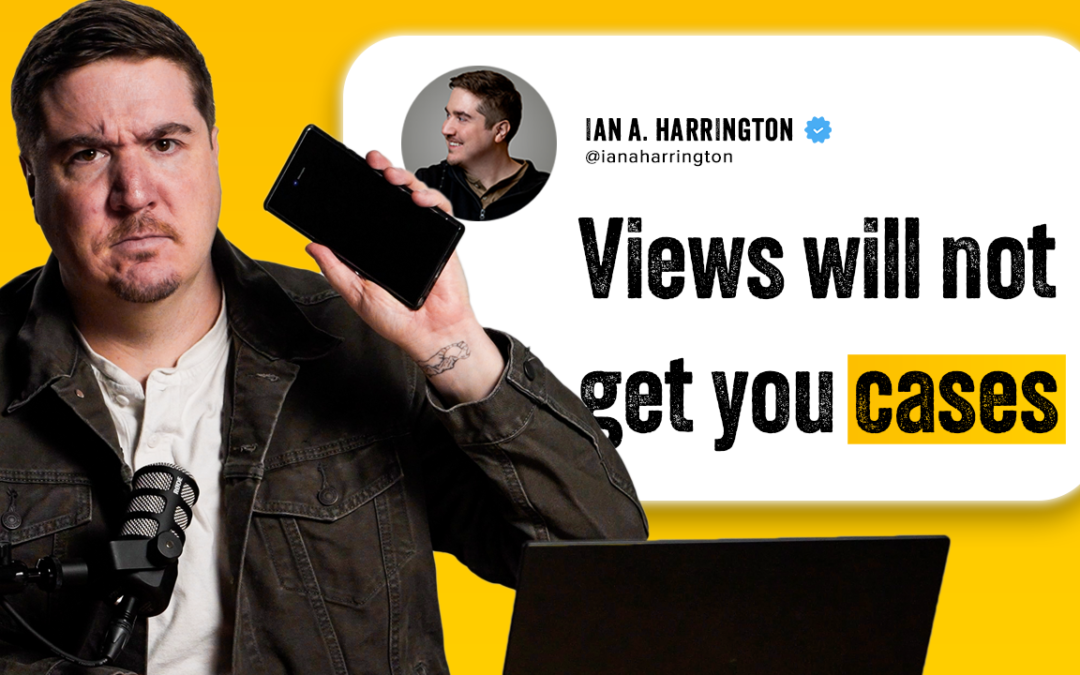
Lawyers Give Up Too Soon On Social
Most lawyers give up on social media long before they ever see results. Why? Because they fall into the same common mistakes that nearly everyone makes when getting started. These missteps lead to slow progress, frustration, and eventually, abandonment of their social media efforts.
I’m Ian A. Harrington, and I’ve worked with some of the top law firms in the country. I specialize in generating cases through social media marketing. If you’re considering social media for your firm, it’s crucial to avoid these three common mistakes that derail so many lawyers before they even get started.
Mistake 1: Having Unrealistic Expectations
The first and perhaps most common mistake is having unrealistic expectations about what social media marketing can deliver—and how quickly it can deliver results. Here’s the truth: social media marketing is a long game.
Unlike other marketing channels, it can take at least a year to see consistent, measurable results. The cost-per-case and ROI for social media are unmatched when done correctly, but the trade-off is that it requires patience and persistence.
Far too often, I see lawyers get excited about social media, invest in filming videos, post consistently for a few months, and then panic when their cost-per-case is significantly higher than their other marketing channels. The problem isn’t social media—it’s their expectations.
If you’re not willing to commit to the process and give it the time it needs to succeed, you’ll end up wasting money. Social media isn’t a quick fix, but if you stick with it, the payoff can be tremendous.
Mistake 2: Not Having a Strategy
The second mistake is diving into social media without a clear strategy. Many law firms post content with no goals, no plan, and no strategy in place.
Here’s what I see all the time:
- A video of the team at a charity event.
- A settlement alert graphic.
- A random holiday post.
If I asked these firms what their social media strategy is, most wouldn’t have an answer. They assume that simply posting content is what social media marketing entails. But here’s the hard truth: posting just to post is a wasted effort.
To generate cases, you need a well-defined strategy. When I work with clients, I start by designing what I call the “3 core strategies” every law firm needs:
- Content Strategy: What type of content will you post, and how will it resonate with your target audience?
- Engagement Strategy: How will you actively connect with your audience and build trust?
- Paid Ads Strategy: How will you use paid social ads to amplify your reach and target high-value cases?
Before you film a single video, sit down and map out these strategies. Putting your plan on paper will save you time, money, and frustration in the long run.
Mistake 3: Only Posting and Not Engaging
Social media isn’t just about posting—it’s also about engaging. This is where many lawyers fall short. They’ll post content and then disappear, only opening the app when it’s time to post again.
But the magic of social media lies in your ability to connect with your audience. Engagement is key. That means:
- Replying to comments on your posts.
- Commenting on other people’s posts.
- Responding to direct messages.
I know this might sound tedious, but time and time again, I’ve seen engagement strategies push firms past their tipping point. Engagement builds trust, fosters relationships, and creates opportunities to convert viewers into clients.
Spend at least an hour a day liking, commenting, and replying—or have someone on your team handle it. This small investment of time can yield significant results.
Don’t Give Up
Social media marketing is not easy, but it’s worth it. If you avoid these common mistakes—unrealistic expectations, lack of strategy, and failure to engage—you’ll be miles ahead of most lawyers trying to navigate social media.
Stick with it. Commit to the process. And remember, the payoff for your efforts will come if you stay consistent.
If you found this helpful, don’t forget to share it, leave a comment, or reach out. The journey to mastering social media starts with one step—and avoiding these pitfalls is the first one.


